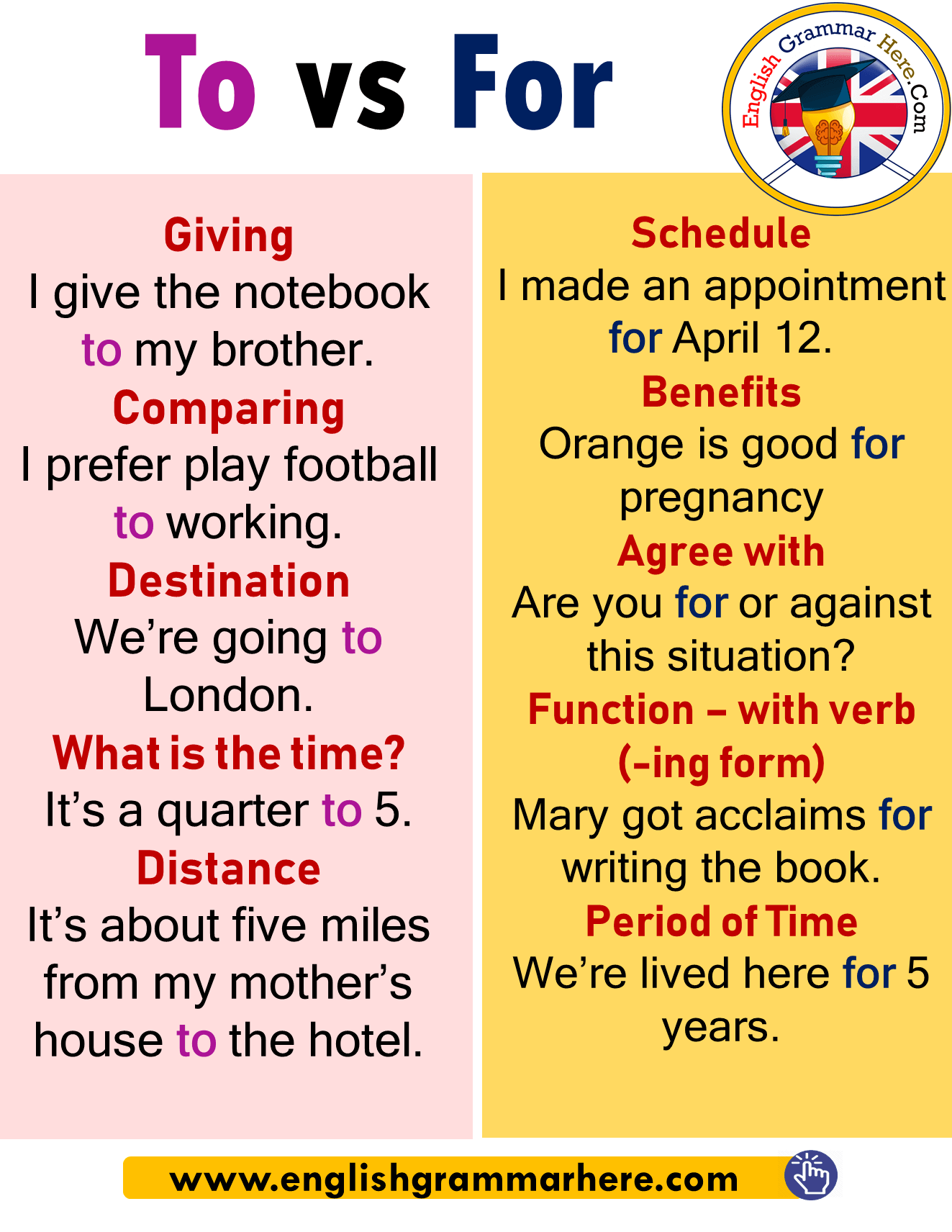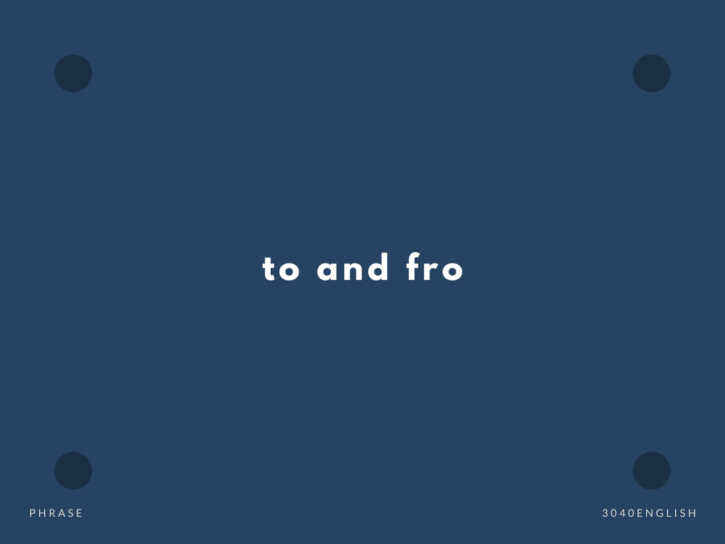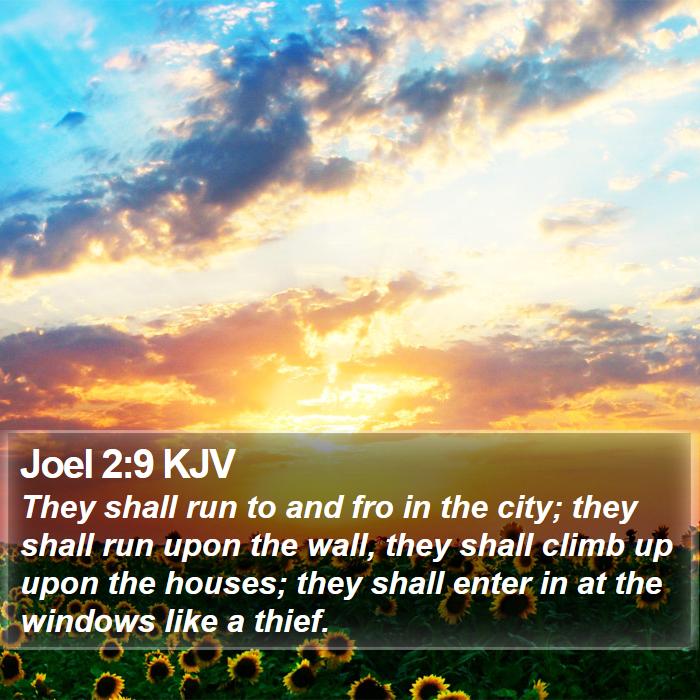
What's the Difference between TO and FOR? (with Useful Examples) ESLBuzz Learning English
Using to and for. July 11, 2012 -. The preposition to has many uses. To can mean towards or in the direction of. We went to the market. Let's walk to the station. The apple fell to the ground. To can also mean 'towards a condition, quality' etc. The boy went to sleep.

Using To and For, Example Sentences English Grammar Here
to-and-fro: [noun] activity involving alternating movement in opposite directions.

To and Fro full YouTube
Using "to" or "for" with purpose and reason. When it comes to reading and explaining why, the simple difference between to and for is: "To" is used with verbs. For example: I came to school to see you. "For" is used with nouns. For example:

The Late Hour
- - - - - - - - - - - - - - - - - - - - - - - - - -If you are a woman with intermediate to advanced English, HEY LADY! 🙋♀️ will help you sharpen your Engli.

To and Fro Ball Sensory Learning Supplies
TO AND FRO definition: 1. in one direction and then in the opposite direction, a number of times: 2. in one direction and…. Learn more.

to and fro の意味と簡単な使い方【音読用例文あり】 30代40代で身につける英会話
Expressing purpose with to and for. We can use to + infinitive and for + noun to say what is the purpose of an action, or the reason why we do something.. To + infinitive. I went to the grocery store to buy some vegetables.; I studied hard to pass the exam.; For + noun. Let's go to the pub for a drink.; We climbed to the top for the views.; Compare to vs for: I went to the shop to buy some milk.

To And Fro Nneka mp3 buy, full tracklist
TO AND FRO meaning: 1. in one direction and then in the opposite direction, a number of times: 2. in one direction and…. Learn more.
To and Fro iDisciple
To vs. for is often a confusing point for English learners, but this guide will help you clear up the differences between these two common English words! Learn about the different uses of "to" and "for," along with related grammar points, and see how it works with examples. We've also added a quiz and practice resources at the end. You'll never mix these words up again!

To and Fro YouTube
Eating lots of doughnuts is very bad ___ you. 1. to. 2. for. 3. no word is needed. 4. both 'to' and 'for' are possible. Correct. Incorrect. Hint. You saw the opposite expression in part three of the lesson; the meaning is the opposite, but the preposition is the same.

Joel 29 KJV They shall run to and fro in the city; they shall
'To' and 'for' are prepositions that are often confused. Although they are used in almost all situations, many people do not know which one to use in which s.

Characteristic to and fro Doppler waveform at the neck of... Download Scientific Diagram
Find out when you should use "to" vs. "for" in conversation and writing using simple rules to remember which one is correct.

TO vs. FOR Difference between To vs For (with Useful Examples) ESLBUZZ
2 meanings: 1. back and forth 2. here and there.. Click for more definitions.

“Toandfro” pattern Download Scientific Diagram
This usage is probably customary. In summary, the general rule-of-thumb is that "to" in these cases is usually used to indicate an opinion, while "for" is usually a statement about benefit or well-being. But there are enough exceptions, idioms, and customs that break this rule that it would behoove you to simply memorize when each is used. Share.

Verb + To 35+ Common Combinations with TO • 7ESL
for. of. to. 4) There was a phone call ___ you. of. to. for. 5) The resort is open from May ___ September. of.

To and Fro Quilt Kit 70 x 90
When you want to use 'to' in a sentence, you're expressing a relationship between two things: 'to' is the verb that refers to the relationship. For instance, in the sentence "I want to eat," you're relating the subject "I" to the verb "want.". In contrast, 'for' is a preposition that links nouns to each other.

English Uses To and For, Definition and Example Sentences English Study Page
Motive/Reason - with noun. "Let's go out for a drink.". Function - with verb (-ing form) "A ladle is a big spoon used for serving soup.". As you can see in #6, TO or FOR can be used for a motive/reason, but TO is always with a verb , and FOR is always with a noun. Here's a good example: I came to New York to work.